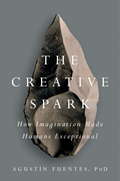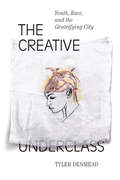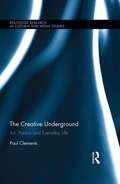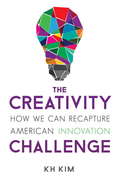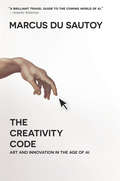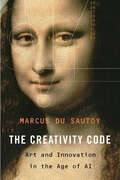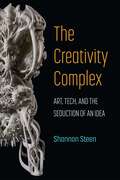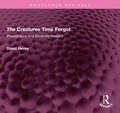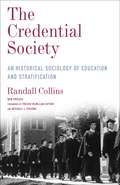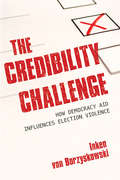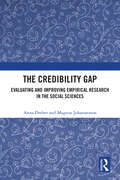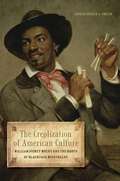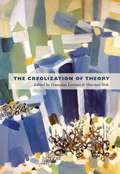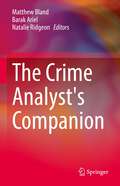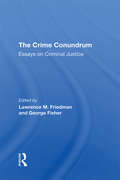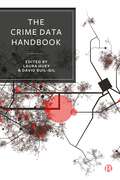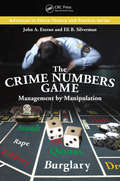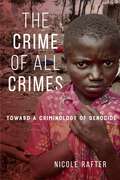- Table View
- List View
The Creative Industries: Culture and Policy
by Terry Flew"Moving from age-old warnings about the influence of the cultural industry to a tentative embrace of a global creative society, Terry Flew's new book provides an excellent overview of this exciting field. Warmly recommended for students and policymakers alike." - Mark Deuze, Indiana University "A comprehensive text on the state of the art of the creative industries... a running commentary on the ebb and flow of both the academic debates (from cultural studies, cultural economics, organisational studies, economic geography and urban sociology) and the policy initiatives that seek to frame the field for outsiders. An ideal primer." - Andy C Pratt, King's College London The rise of creative industries requires new thinking in communication, media and cultural studies, media and cultural policy, and the arts and information sectors. The Creative Industries sets the agenda for these debates, providing a richer understanding of the dynamics of cultural markets, creative labour, finance and risk, and how culture is distributed, marketed and creatively re-used through new media technologies. This book: Develops a global perspective on the creative industries and creative economy Draws insights from media and cultural studies, innovation economics, cultural policy studies, and economic and cultural geography Explores what it means for policy-makers when culture and creativity move from the margins to the centre of economic dynamics Makes extensive use of case studies in ways that are relevant not only to researchers and policy-makers, but also to the generation of students who will increasingly be establishing a 'portfolio career' in the creative industries. International in coverage, The Creative Industries traces the historical and contemporary ideas that make the cultural economy more relevant that it has ever been. It is essential reading for students and academics in media, communication and cultural studies.
The Creative Qualitative Researcher: Writing That Makes Readers Want to Read
by Ronald J. PeliasThe Creative Qualitative Researcher is designed to help readers see the range of possibilities of creative scholarship. The phrase "creative qualitative researchers" points toward scholars who call upon their literary skills to evoke the emotional and intellectual complexity of their subjects; who deploy their vulnerable, relational, and reflexive selves to expose and change problematic cultural practices; and who engage their embodied ideological and ethical sensibilities as researchers. Part I introduces chapters on four qualitative methods: autoethnography, performative writing, narrative inquiry and poetic inquiry. Each of these four method chapters presents the method written in the style it features, provides writing prompts for exploring the chapter’s themes, and offers written examples of the method. Part II, divided into four chapters, aims to develop creative qualitative research skills relevant to the methods discussed in Part I. Chapter 5 discusses empathy and ethics; Chapter 6 is a primer on creative writing; Chapter 7 identifies some alternative ideas for using the words of others; and Chapter 8 focuses on collaborative improvisation to compose scholarly work. Each of the chapters in Part II includes a large number of writing exercises, prompts and strategies to assist scholars in becoming better creative researchers. By the end of the book, readers will know what creative research might entail and will have a clear understanding of the methods. Working with the various writing strategies, readers will see the potential of creative research and gain skills for its use.
The Creative Reflective Practitioner: Research Through Making and Practice
by Linda CandyThe Creative Reflective Practitioner explores research and practice through the eyes of people with a wholehearted commitment to creative work. It reveals what it means to be a reflective creative practitioner, whether working alone, in collaboration with others, with digital technology or doing research, and what we can learn from listening and observing closely. It gives the reader new insights into the fascinating challenge that having a reflective creative mindset can bring. Creative reflective practice is seen through practitioner ideas and works which have informed the writing at every level, supported by research studies and historical accounts. The practitioners featured in this book represent a broad spectrum of interdisciplinary creative activities producing works in film, music, drama, dance and interactive installations. Their work is innovative, full of new ideas and exciting to experience, offering engagement and challenge for audiences and participants alike. Practitioner interviews give a direct sense of how they see creative practice from the inside. The ways in which these different situations of practice stimulate and facilitate reflection in practice and how we can learn from this are described. Variations of reflective practice are discussed that extend the original concepts proposed by Donald Schön, and a contemporary dimension is added through the role of the digital in creative reflective practice as a tool, mediator, medium and partner. This book is relevant to people who wish to understand creativity and reflection in practice and how to learn from the practitioners themselves. This includes researchers in any discipline as well as students, arts professionals and practitioners such as artists, curators, designers, musicians, performers, producers and technologists.
The Creative Spark: How Imagination Made Humans Exceptional
by Agustín FuentesA bold new synthesis of paleontology, archaeology, genetics, and anthropology that overturns misconceptions about race, war and peace, and human nature itself, answering an age-old question: What made humans so exceptional among all the species on Earth? Creativity. It is the secret of what makes humans special, hiding in plain sight. Agustín Fuentes argues that your child's finger painting comes essentially from the same place as creativity in hunting and gathering millions of years ago, and throughout history in making war and peace, in intimate relationships, in shaping the planet, in our communities, and in all of art, religion, and even science. It requires imagination and collaboration. Every poet has her muse; every engineer, an architect; every politician, a constituency. The manner of the collaborations varies widely, but successful collaboration is inseparable from imagination, and it brought us everything from knives and hot meals to iPhones and interstellar spacecraft. Weaving fascinating stories of our ancient ancestors' creativity, Fuentes finds the patterns that match modern behavior in humans and animals. This key quality has propelled the evolutionary development of our bodies, minds, and cultures, both for good and for bad. It's not the drive to reproduce; nor competition for mates, or resources, or power; nor our propensity for caring for one another that have separated us out from all other creatures. As Fuentes concludes, to make something lasting and useful today you need to understand the nature of your collaboration with others, what imagination can and can't accomplish, and, finally, just how completely our creativity is responsible for the world we live in. Agustín Fuentes's resounding multimillion-year perspective will inspire readers—and spark all kinds of creativity.
The Creative System in Action: Understanding Cultural Production and Practice
by Phillip McIntyre Janet Fulton Elizabeth PatonThe first of its kind, this book focuses on empirical studies into creative output that use and test the systems approach. The collection of work from cultural studies, sociology, psychology, communication and media studies, and the arts depicts holistic and innovative ways to understand creativity as a system in action.
The Creative Underclass: Youth, Race, and the Gentrifying City
by Tyler DenmeadAs an undergraduate at Brown University, Tyler Denmead founded New Urban Arts, a nationally recognized arts and humanities program primarily for young people of color in Providence, Rhode Island. Along with its positive impact, New Urban Arts, under his leadership, became entangled in Providence's urban renewal efforts that harmed the very youth it served. As in many deindustrialized cities, Providence's leaders viewed arts, culture, and creativity as a means to drive property development and attract young, educated, and affluent white people, such as Denmead, to economically and culturally kick-start the city. In The Creative Underclass, Denmead critically examines how New Urban Arts and similar organizations can become enmeshed in circumstances where young people, including himself, become visible once the city can leverage their creativity to benefit economic revitalization and gentrification. He points to the creative cultural practices that young people of color from low-income communities use to resist their subjectification as members of an underclass, which, along with redistributive economic policies, can be deployed as an effective means with which to both oppose gentrification and better serve the youth who have become emblematic of urban creativity.
The Creative Underground: Art, Politics and Everyday Life (Routledge Research in Cultural and Media Studies)
by Paul ClementsPaul Clements champions the creative underground and expressions of difference through visionary avant-garde and resistant ideas. This is represented by an admixture of utopian literature, manifestos and lifestyles which challenge normality and attempt to reinvent society, as practiced for example, by radicals in bohemian enclaves or youth subcultures. He showcases a range of 'art' and participatory cultural practices that are examined sociopolitically and historically, employing key theoretical ideas which highlight their contribution to aesthetic thinking, political ideology, and public discourse. A reevaluation of the arts and progressive modernism can reinvigorate culture through active leisure and post-work possibilities beyond materialism and its constraints, thereby presenting alternatives to established understandings and everyday cultural processes. The book teases out the difficult relationship between the individual, culture and society especially in relation to autonomy and marginality, while arguing that the creative underground is crucial for a better world, as it offers enchantment, vitality and hope.
The Creativity Challenge: How We Can Recapture American Innovation
by Kh KimAmerican creativity has steadily declined since 1990. That disturbing trend recently came to light through the work of leading educational psychologist KH Kim, a recognized expert in creativity assessment. In this insightful and inspiring book, Kim discovers the causes of the decrease in creativity and proposes methods of recapturing American creativity in education, in industry, and throughout every sector of society. Through the life stories of innovators, Kim debunks the assumption that creative people must be born with innate talents. She shows how parents, educational methods, and cultures shaped innovators' creative expression. As her research clearly indicates, cultural climates and attitudes (including over-reliance on standardized testing) often work against innovation unless creativity is deliberately grown and developed. Culminating over twenty years of extensive research, Kim has devised original models to identify creativity in people and organizations and help it to blossom. Gardening metaphors illustrate simple but powerful steps to transform creative potential into innovation. She emphasizes practical steps to cultivate creative climates (environment) in schools, in homes, and at work; nurture creative attitudes (personality) toward learning, work, and life; and apply creative thinking skills. Kim's models for creativity are complemented with evidence-based methods to learn and practice creative skills in everyday life.From the Trade Paperback edition.
The Creativity Code: Art and Innovation in the Age of AI
by Marcus Du SautoyMost books on AI focus on the future of work. But now that algorithms can learn and adapt, does the future of creativity also belong to well-programmed machines? To answer this question, Marcus du Sautoy takes us to the forefront of creative new technologies and offers a more positive and unexpected vision of our future cohabitation with machines.
The Creativity Code: Art and Innovation in the Age of AI
by Marcus du SautoyMost books on AI focus on the future of work. But now that algorithms can learn and adapt, does the future of creativity also belong to well-programmed machines? To answer this question, Marcus du Sautoy takes us to the forefront of creative new technologies and offers a more positive and unexpected vision of our future cohabitation with machines.
The Creativity Complex: Art, Tech, and the Seduction of an Idea
by Shannon Steen“Creativity” is a word that excites and dazzles us. It promises brilliance and achievement, a shield against conformity, a channel for innovation across the arts, sciences, technology, and education, and a mechanism for economic revival and personal success. But it has not always evoked these ideas. The Creativity Complex traces the history of how creativity has come to mean the things it now does, and explores the ethical implications of how we use this term today for both the arts and for the social world more broadly. Richly researched, the book explores how creativity has been invoked in arenas as varied as Enlightenment debates over the nature of cognition, Victorian-era intelligence research, the Cold War technology race, contemporary K-12 education, and even modern electoral politics. Ultimately, The Creativity Complex asks how our ideas about creativity are bound up with those of self-fulfillment, responsibility, and the individual, and how these might seduce us into joining a worldview and even a set of social imperatives that we might otherwise find troubling.
The Creatures Time Forgot: Photography and Disability Imagery (Routledge Revivals)
by David HeveyFirst published in 1992, The Creatures Time Forgot examines the representation of disabled people – in advertising, particularly that produced by disability charities, and in the work of photographers such as Diane Arbus and Gary Winogrand. He shows how such images construct disabled people as ‘creatures,’ the tragic-but-brave objects of photographic gaze, or as the ‘’appy ‘andicapped’ of ‘positive imagery’ advertising. As a disabled photographer and writer, David Hevey has been a pioneer in challenging such visual representations of disabled people. His work advocates a move away from medical, charity or impairment-fixated imagery towards a visual equivalent of ‘Rights not Charity’. The book outlines David Hevey’s own photographic practice and includes wide-ranging selections from his work to create a visual form which reflects the new social presence of disabled people. This book will be of interest to students of media studies, cultural studies, and disability studies.
The Credential Society: An Historical Sociology of Education and Stratification (Legacy Editions)
by Randall CollinsThe Credential Society is a classic on the role of higher education in American society and an essential text for understanding the reproduction of inequality. Controversial at the time, Randall Collins’s claim that the expansion of American education has not increased social mobility, but rather created a cycle of credential inflation, has proven remarkably prescient.Collins shows how credential inflation stymies mass education’s promises of upward mobility. An unacknowledged spiral of the rising production of credentials and job requirements was brought about by the expansion of high school and then undergraduate education, with consequences including grade inflation, rising educational costs, and misleading job promises dangled by for-profit schools. Collins examines medicine, law, and engineering to show the ways in which credentialing closed these high-status professions to new arrivals. In an era marked by the devaluation of high school diplomas, outcry about the value of expensive undergraduate degrees, and the proliferation of new professional degrees like the MBA, The Credential Society has more than stood the test of time. In a new preface, Collins discusses recent developments, debunks claims that credentialization is driven by technological change, and points to alternative pathways for the future of education.
The Credibility Challenge: How Democracy Aid Influences Election Violence
by Inken von BorzyskowskiThe key to the impact of international election support is credibility; credible elections are less likely to turn violent. So argues Inken von Borzyskowski in The Credibility Challenge, in which she provides an explanation of why and when election support can increase or reduce violence. Von Borzyskowski answers four major questions: Under what circumstances can election support influence election violence? How can election support shape the incentives of domestic actors to engage in or abstain from violence? Does support help reduce violence or increase it? And, which type of support—observation or technical assistance—is better in each instance? The Credibility Challenge pulls broad quantitative evidence and qualitative observations from Guyana, Liberia, Kenya, Sierra Leone, and Bangladesh to respond to these questions. Von Borzyskowski finds that international democracy aid matters for election credibility and violence; outside observers can exacerbate postelection violence if they cast doubt on election credibility; and technical assistance helps build electoral institutions, improves election credibility, and reduces violence. Her results advance research and policy on peacebuilding and democracy promotion in new and surprising ways.
The Credibility Gap: Evaluating and Improving Empirical Research in the Social Sciences
by Anna Dreber Magnus JohannessonWhich scientific results can we trust? This question has been brought to the forefront of research in the social sciences in recent years with the movement towards open science practices and preregistration. Systematic replication studies of laboratory experiments in the social sciences have found that only about half of the “statistically significant” results published in top journals can be replicated in the sense that similar results are achieved with new data. This low replicability may be even lower in studies based on observational data as such studies have more degrees of freedom in the analysis of the data leading to larger possibilities to selectively report more publishable findings.In this book, the authors provide a framework for evaluating reproducibility, replicability and generalizability of empirical research in the social sciences. They define different types of reproducibility and replicability and show how they can be measured to evaluate the credibility of published findings. Different approaches to improving the credibility of published findings, such as preregistration with detailed pre-analysis plans, Registered Report publications, and preregistered prospective meta-analysis are also outlined and discussed. Even if published results are not systematically biased, the variation in results across populations, research designs, and analyses decreases the reliability and generalizability of published findings. The book shows how such heterogeneity in results can be measured and incorporated in the analysis to more accurately represent the uncertainty and thereby generalizability of reported results.
The Creolization of American Culture: William Sidney Mount and the Roots of Blackface Minstrelsy (Music in American Life)
by Christopher J SmithThe Creolization of American Culture examines the artworks, letters, sketchbooks, music collection, and biography of the painter William Sidney Mount (1807–1868) as a lens through which to see the multiethnic antebellum world that gave birth to blackface minstrelsy. As a young man living in the multiethnic working-class community of New York's Lower East Side, Mount took part in the black-white musical interchange his paintings depict. An avid musician and tune collector as well as an artist, he was the among the first to depict vernacular fiddlers, banjo players, and dancers precisely and sympathetically. His close observations and meticulous renderings provide rich evidence of performance techniques and class-inflected paths of musical apprenticeship that connected white and black practitioners. Looking closely at the bodies and instruments Mount depicts in his paintings as well as other ephemera, Christopher J. Smith traces the performance practices of African American and Anglo-European music-and-dance traditions while recovering the sounds of that world. Further, Smith uses Mount's depictions of black and white music-making to open up fresh perspectives on cross-ethnic cultural transference in Northern and urban contexts, showing how rivers, waterfronts, and other sites of interracial interaction shaped musical practices by transporting musical culture from the South to the North and back. The "Africanization" of Anglo-Celtic tunes created minstrelsy's musical "creole synthesis," a body of melodic and rhythmic vocabularies, repertoires, tunes, and musical techniques that became the foundation of American popular music. Reading Mount's renderings of black and white musicians against a background of historical sites and practices of cross-racial interaction, Smith offers a sophisticated interrogation and reinterpretation of minstrelsy, significantly broadening historical views of black-white musical exchange.
The Creolization of Theory
by Shu-Mei Shih Françoise LionnetIntroducing this collection of essays, Franoise Lionnet and Shu-mei Shih argue that looking back--investigating the historical, intellectual, and political entanglements of contemporary academic disciplines--offers a way for scholars in the humanities to move critical debates forward. They describe how disciplines or methodologies that seem distinct today emerged from overlapping intellectual and political currents in the 1960s and early 1970s, in the era of decolonization, the U. S. civil rights movement, and antiwar activism. While both American ethnic studies programs and "French theory" originated in decolonial impulses, over time, French theory became depoliticized in the American academy. Meanwhile, ethnic studies, and later also postcolonial studies, developed politically and historically grounded critiques of inequality. Suggesting that the abstract universalisms of Euro-American theory may ultimately be the source of its demise, Lionnet and Shih advocate the creolization of theory: the development of a reciprocal, relational, and intersectional critical approach attentive to the legacies of colonialism. This use of creolization as a theoretical and analytical rubric is placed in critical context by Dominique Chanc, who provides a genealogy of the concept of creolization. In their essays, leading figures in their fields explore the intellectual, disciplinary, and ethical implications of the creolized theory elaborated by Lionnet and Shih. douard Glisssant links the extremes of globalization to those of colonialism and imperialism in an interview appearing for the first time in English in this volume. The Creolization of Theory is a bold intervention in debates about the role of theory in the humanities. Contributors. tienne Balibar, Dominique Chanc, Pheng Cheah, Leo Ching, Liz Constable, Anne Donadey, Fatima El-Tayeb, Julin Everett, douard Glissant, Barnor Hesse, Ping-hui Liao, Franoise Lionnet, Walter Mignolo, Andrea Schwieger Hiepko, Shu-mei Shih
The Cricket's Cage: A Chinese Folktale
by Stefan CzerneckiRetells a Chinese folktale in which a clever and kindly cricket is responsible for designing the tower buildings for Beijing's "Forbidden City."
The Crime Analyst's Companion
by Barak Ariel Matthew Bland Natalie RidgeonThis volume presents a collection of essays from experienced crime analysts from around the world. It explores themes relevant to anyone embarking on, or already into a career in crime analysis. Divided into two sections, this book addresses technical issues central to the profession, from collection of data to presenting findings to reluctant audiences. It incorporates a collection of methodological case studies, demonstrating the ways analysis has made a meaningful difference to policing and security. This volume is intended for scholars who study and work with crime analysts, the global community of undergraduate and graduate students who may take one of these roles in the future, and law enforcement.
The Crime Conundrum: Essays On Criminal Justice
by Lawrence M. Friedman George FisherThere may be areas of human life in which people have profited from understanding history, but criminal justice is definitely not one of them. In this field, each generation seems to undo the last generation's reforms. Each generation resurrects old failures and trots them out as new. A previous generation hailed indeterminate sentencing as a great
The Crime Data Handbook
by Mark Mills Rosemary Barberet Nicholas Lord Jude Towers Alex Sutherland Craig Bennell Lisa Tompson Jack Cunliffe Henk Elffers Kirsty Bennett Stuart Thomas Anthony Morgan Scott Keay Alexandru Cernat Ian Brunton-Smith Tim Verlaan Sam Langton Sophie Curtis-Ham Sarah Czarnomski Jesús C. Aguerri Fernando Miró-Llinares Tomas Diviak Tori Semple Bryce Jenkins Angelo Moretti Jose Pina-Sanchez Thiago R. Oliveira Leticia Couto Marta Murrià Sangenís Cristina Sobrino Garcés Timothy I. Cubitt Nico Trajtenberg Olga Sanchez de Ribera de Castro Carly Lighttowlers Lucy Bryant Olivia Horsefield Francisco J. Castro-Toledo Ana B. Gómez-Bellvís Sara Correia-Hopkins José María López Riba Raquel Bartolomé Gutiérrez Esther Fernández-MolinaCrime research has grown substantially over the past decade, with a rise in evidence-informed approaches to criminal justice, statistics-driven decision-making and predictive analytics. The fuel that has driven this growth is data – and one of its most pressing challenges is the lack of research on the use and interpretation of data sources. This accessible, engaging book closes that gap for researchers, practitioners and students. International researchers and crime analysts discuss the strengths, perils and opportunities of the data sources and tools now available and their best use in informing sound public policy and criminal justice practice.
The Crime Numbers Game: Management by Manipulation
by John A. Eterno Eli B. SilvermanIn the mid-1990s, the NYPD created a performance management strategy known as Compstat. It consisted of computerized data, crime analysis, and advanced crime mapping coupled with middle management accountability and crime strategy meetings with high-ranking decision makers. While initially credited with a dramatic reduction in crime, questions quic
The Crime of All Crimes: Toward a Criminology of Genocide
by Nicole RafterCambodia. Rwanda. Armenia. Nazi Germany. History remembers these places as the sites of unspeakable crimes against humanity, and indisputably, of genocide. Yet, throughout the twentieth century, the world has seen many instances of violence committed by states against certain groups within their borders—from the colonial ethnic cleansing the Germans committed against the Herero tribe in Africa, to the Katyn Forest Massacre, in which the Soviets shot over 20,000 Poles, to anti-communist mass murders in 1960s Indonesia. Are mass crimes against humanity like these still genocide? And how can an understanding of crime and criminals shed new light on how genocide—the “crime of all crimes”—transpires? In The Crime of All Crimes, criminologist Nicole Rafter takes an innovative approach to the study of genocide by comparing eight diverse genocides--large-scale and small; well-known and obscure—through the lens of criminal behavior. Rafter explores different models of genocidal activity, reflecting on the popular use of the Holocaust as a model for genocide and ways in which other genocides conform to different patterns. For instance, Rafter questions the assumption that only ethnic groups are targeted for genocidal “cleansing," and she also urges that actions such as genocidal rape be considered alongside traditional instances of genocidal violence. Further, by examining the causes of genocide on different levels, Rafter is able to construct profiles of typical victims and perpetrators and discuss means of preventing genocide, in addition to delving into the social psychology of genocidal behavior and the ways in which genocides are brought to an end. A sweeping and innovative investigation into the most tragic of events in the modern world, The Crime of All Crimes will fundamentally change how we think about genocide in the present day.
The Crime of Maldevelopment: Economic Deregulation and Violence in the Global South (Crimes of the Powerful)
by María Laura BöhmThis book explores the causal relationship between the deregulation of international economic interests and the forms of violence that prevail in a large part of the Global South. More specifically, this book tells the story of how transnational corporations benefitting from increasing deregulation of their international economic interests, account for severe harm, the unrelenting violation of human rights, and maldevelopment in Latin America. Dependent on the structural deficiencies of the Latin American region, this book tests the examples of the extractive industries and multinational expansionism and the link between deregulated economies at the international level and the damaging local effects that increase what is here called maldevelopment. Introducing the conceptual category of maldevelopment to criminology, the author makes recommendations for further research and outlines a network of possible mechanisms for its prevention and sanction - and for the work of reparation and construction towards the satisfaction of the needs of the victim or victimizable populations. This provocative and original text will be essential reading for those concerned with white collar crime and crimes of the powerful, and for researchers in criminology, sociology, law, political science, development studies and international political economy.
The Crimes of Digital Capitalism: Corporate Crime in an Age of Exploitation (Justice, Inequality, and the Digital World)
by Aitor JiménezHow technology companies profit from our increasing dependence on digital infrastructure and the privatization of dataThe Crimes of Digital Capitalism proposes the first comprehensive theory of corporate crime for the digital age. Aitor Jiménez explores the criminal structure of digital capitalism fostered by states and corporations along the supply chain, illustrating how the rise of algorithmic racism, the Googlization of education, and the deployment of AI surveillance/killing technologies brutally impacts the lives of millions of people around the world.Under the label of digital capitalism, argues Jiménez, lives a system of exploitation that, standing on digital technologies, is pushing the neoliberal project into an entirely new dimension of practices and exploitative policies with its own set of socially harmful consequences. Digital capitalism has accelerated the neoliberal attack on labor rights, expanded previous forms of exploitation, and developed new ways of surveilling and controlling workers. Delving into the structural relation between capitalism and corporate crime in the digital age, The Crimes of Digital Capitalism argues that the massive social harms caused by large technology companies and states should not be seen as accidental by-products, but as criminal strategies necessary for the existence of digital capitalism.Linking the debates on the platform economy to today’s most pressing social justice issues, this deeply interdisciplinary book connects complex ideas around digital capitalism to everyday problems.



